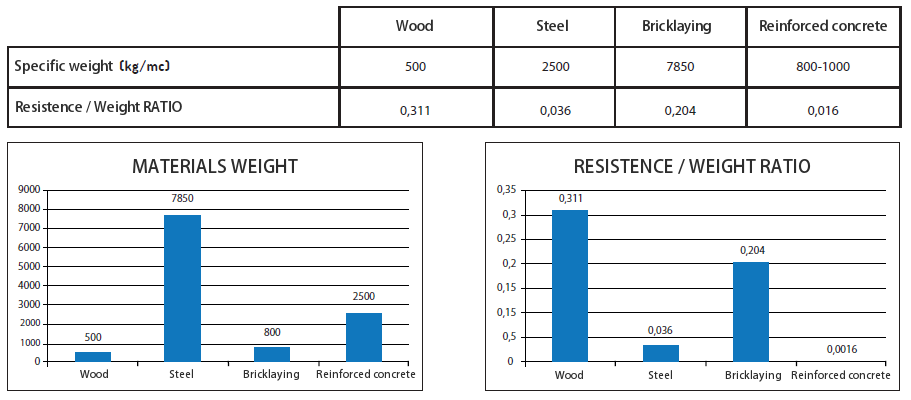THE WOOD IS THE BUILDING MATERIAL TO PREFER IN SEISMIC AREAS
The wood is lighter and more flexible than the other building materials.
The forces operating on a building in the event of an earthquake are proportional to the mass of the building itself. The mass of wood is approximately ¼ of the one of concrete: this means that wooden buildings are subject to a definitely more reduced destructive force of the earthquake.
The following table compares the wood with other “traditional” construction materials:

The wood has a particularly favorable mechanical behavior, if compared to its mass. If the mass is the same, the mechanical resistance of wood is among the best in the world. This means that wooden structures are able to absorb consistent and strong forces without damages.
The wood is elastic by nature so it can easily bear a slight deformation: this is very positive in case of earthquake as its major deformability allows for a better absorption of seismic waves.
Modern wooden buildings are designed favouring the use of flat elements, such as wooden frames covered by wooden panels for stiffening in case of framed structure.
Buildings made up with flat elements are more resistant in the event of earthquake than constructions made up with linear elements (for instance pillar constructions) because the stiffness and rigidity of the structure are distributed all across the building and not concentrated in few points.
A wooden building is never a monolithic body, but it is composed by different elements (as a rule wall and slab) united each other by mechanical connections (also called joints).
If well-designed and well-realised, they work as a further element of building elasticity and contribute to dissipate the energy unleashed by the quake, so avoiding the collapse of the structure.
As a matter of fact, the seismic safety of a wooden building also depends on connections and on their proper design.

Contacts
Wooden Buildings s.r.l.
Via della Stazione 67
60022 Castelfidardo An
T 071 291 63 13
F 071 214 68 90
info@woodenbuildings.it




